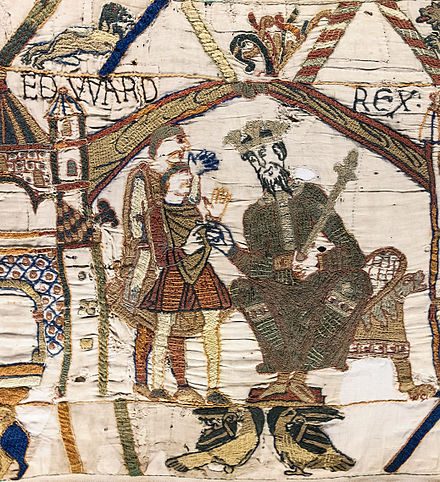1066 Death of Edward the Confessor
The second-last Anglo-Saxon king of England, Edward the Confessor was a strange bird. He was the seventh son of the incompetent Aethelred the Unready and was forced to flee to Normandy when his father lost the throne to a Danish invasion. After the death of his father and brothers, and the marriage of his mother to the Danish ruler Cnut, Edward spent decades in exile on the Continent as the leading Saxon claimant to the throne. When Cnut died, his sons Harthacnut and Harold Harefoot quarrelled over the succession with Edward wisely staying out of reach until his rivals died and he was acclaimed king in 1042.
Edward’s rule was marked by the need for the support of the powerful English earls, particularly Godwin of Wessex. Edward despised Godwin who had murdered Edward’s brother but he married the earl’s daughter and gave his brothers-in-law considerable land holdings and positions of power. In foreign affairs Edward was successful in quelling the ambitions of the Welsh and Scots but he gave up trying to curb the acquisitive Godwin clan. When he died childless, he was immediately succeeded by Harold Godwinson. Harold was challenged by a Viking invasion aided by his brother Tostig; this Harold crushed, only to fall shortly thereafter to an invasion by Normans, led by William the Bastard who claimed that the English throne had been promised to him. William became thereby “the Conqueror” and erased Saxon power in England.
Edward’s most lasting contribution was the commissioning of Westminster Abbey. He was canonised as a saint in 1161, the only English king to be granted that status.
